"What hole?"
First off - an apology. I've been lax in getting this next instalment posted. Several days away over the holiday season led to several days more trying to sort out family issues, which have since spiralled out of all proportion. I think I have now put the genie back in the bottle, so on with the show.
Where were we? Ah yes, we'd poured the basement walls. They'd gone a little wonky (because I was a numpty and failed to install adequate bracing on the outside of internal T-walls), but we had walls that we could build up from.
Time for backfill and construction of the remaining foundations (our basement is only 60% of the width of the above-ground house). Before that, we needed to fit a drainage channel around the basement walls & slab. Here's the groundworkers putting the (terram-wrapped) french drain in around the slab/wall junction, which was then covered in 10mm pea gravel to a depth of 500mm, and then 40mm clean limestone:
This actually led to one of the most enduring memories of the project to date. I was laying the drain outside the far corner of the basement (where the cave-in nearly smashed the wall apart). The groundworkers had decided that they wouldn't get in that part of the excavation (between the concrete walls and the bank) in case of further cave-ins, so myself and a couple of mates sorted out the drainage channel. Unfortunately, it had rained a lot over the weekend, and was muddy and slippy and wet... Standing on the edge of the slab was precarious to say the least, and I'm not the most svelte individual... Long story short, I fell into the mud. Which sounds funny, but at the time, it was rather terrifying, because of the depth of said mud, and how much effort it took to get me out of the mud.
Don't believe me? Here's how deep it was:
Took 2 people to lift me out of the mud, and I came out without one of my boots as well, which has never been seen since. I had to walk home, because I didn't have a change of clothes, and I had come to site in the Jag. So over an hour, with outside temps being about 3C, trudging home feeling very sorry for myself. At least my mate lent me a pair of boots!
One detail I haven't mentioned prior... The basement walls are 10" thick concrete core, but the above-ground walls were designed to be 6.25" concrete core. The mathematically-astute among you will have already worked out that gives 3.75" (or a touch over 95mm in new money). This was intentional, because I figured I was a clever so-and-so, and could use that 95mm as a bearing surface for concrete floor beams. Genius, eh?
Well, maybe. It did give us a nice bearing surface, and it did remove a potential cold join between pours at ground level, so big win there. However it then entailed removal of a large amount of EPS from the inside of the blocks so that the beams would slide along on this concrete (because a crane wouldn't get on site very easily, so we used manual labour to move the beams), so the labour aspect was considerable. It took better part of 2 days to remove the EPS (and resulted in about 3 builders bags worth of EPS fragments sitting in our basement), and another 2 days to set the beams in place and start laying the infill blocks.
Here are the beams going on:
And here are the floor blocks being laid:
Here you can see the EPS having been removed en mass from where the beams had to slide. Don't worry - it's not a giant thermal bridge, because
- we put EPS back around the beams once they were in situ properly (albeit much later in this story)
- we have now put insulation above the floor beams for the UFH to sit on top of, and
- we will shortly be putting insulation under the floor beams in the basement ceilings too (cos we have a load left over)
(The big hole is where the stairwell is going, in case you're wondering!)
We backfilled at the same time as laying the floor beams. More precisely, because of a battle of wills between the engineer and the groundworkers, we backfilled to approx 50% of depth, then laid the beams (with the walls evenly loaded all round by the backfill to "prevent asymmetric destabilisation and collapse") and finally finished the backfill. 440 tonnes of backfill went in around the basement - that's a lot of stone!
Next up was the remaining foundations. Building Control had specified a minimum depth for the mass-fill RC footings for the rest of the house, because of the massive lombardy poplar trees at the front of site. A nice big strip was dug out (2.5m deep at the front, and 1.5m deep at the back of the plot - furthest from the trees), and filled with concrete.
The engineer had specified cages of 16mm rebar to make our ground beams that linked the mass-fill footings to the basement walls, with clay heave protection, so we dug out from the clay capping over the backfill, formed shutters with the heave protection, and dropped in our cages:
Once the concrete had started to cure in earnest, we laid the first course of blocks on the new foundations, and linked into the basement wall blocks. The steel reinforcement is probably overkill, but better safe than sorry when your engineers starts saying "you don't want the two halves of the house to separate"...
The blue pipes were my attempt to ventilate under the block & beam floor that we were going to lay over the new foundations. Turns out that Building Control didn't care a jot about that once they saw how much backfill stone we had placed - not sure why that would matter, but there you go! Concrete was poured in this course of blocks to stabilise everything, and get us ready to carry on with the build.
Myself and a couple of mates laid the remaining floor beams in a weekend:
That'll do for now - as my Mum used to say: "keep 'em wanting more!"
-
 5
5


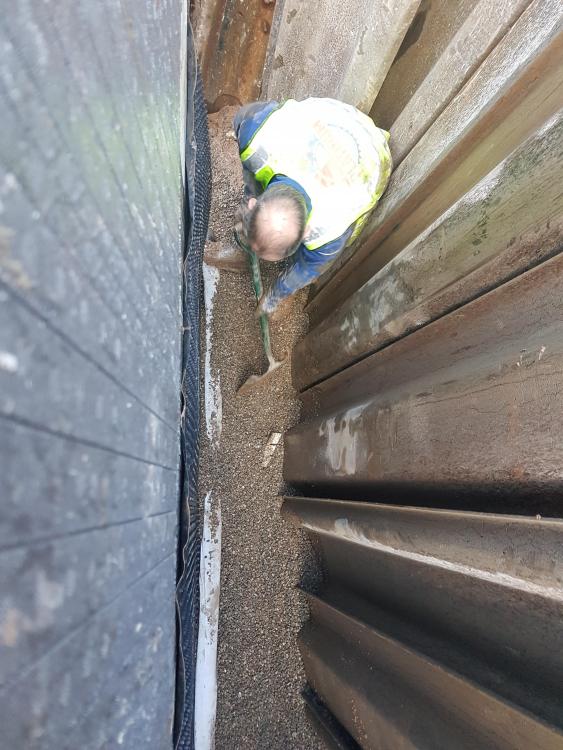
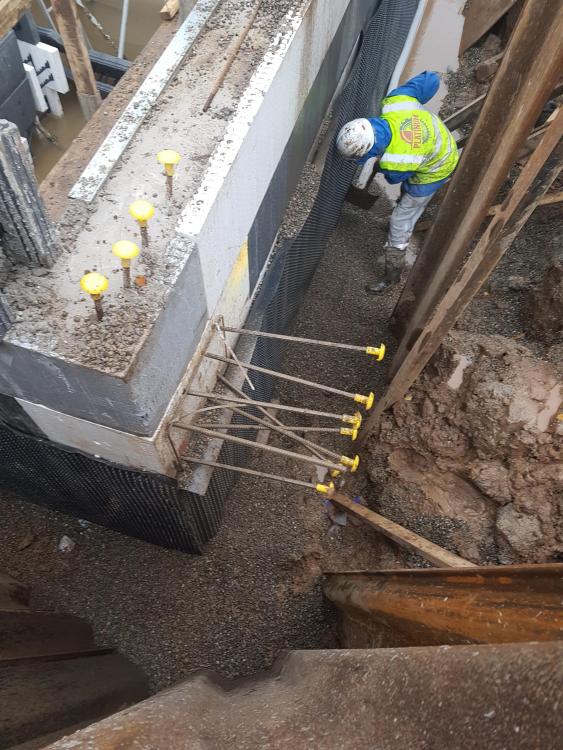
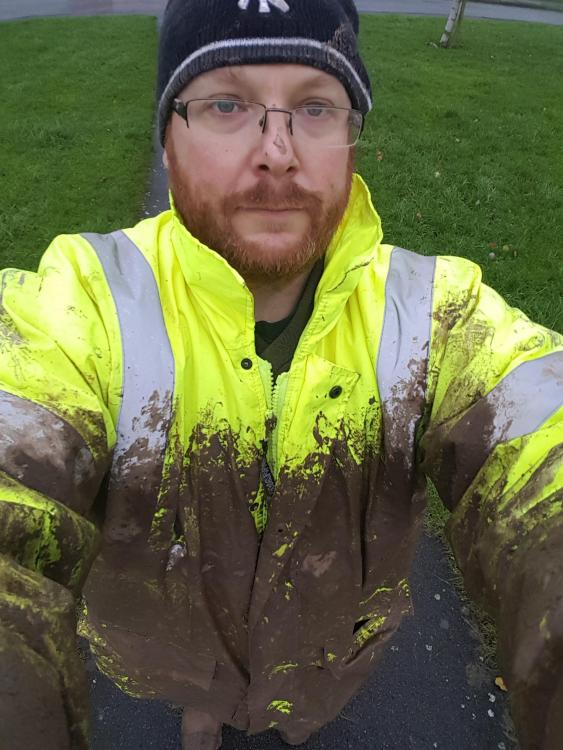
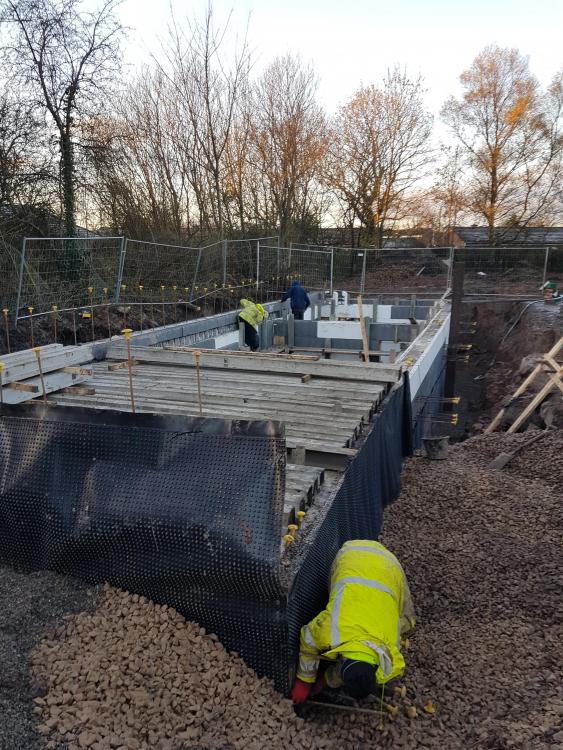
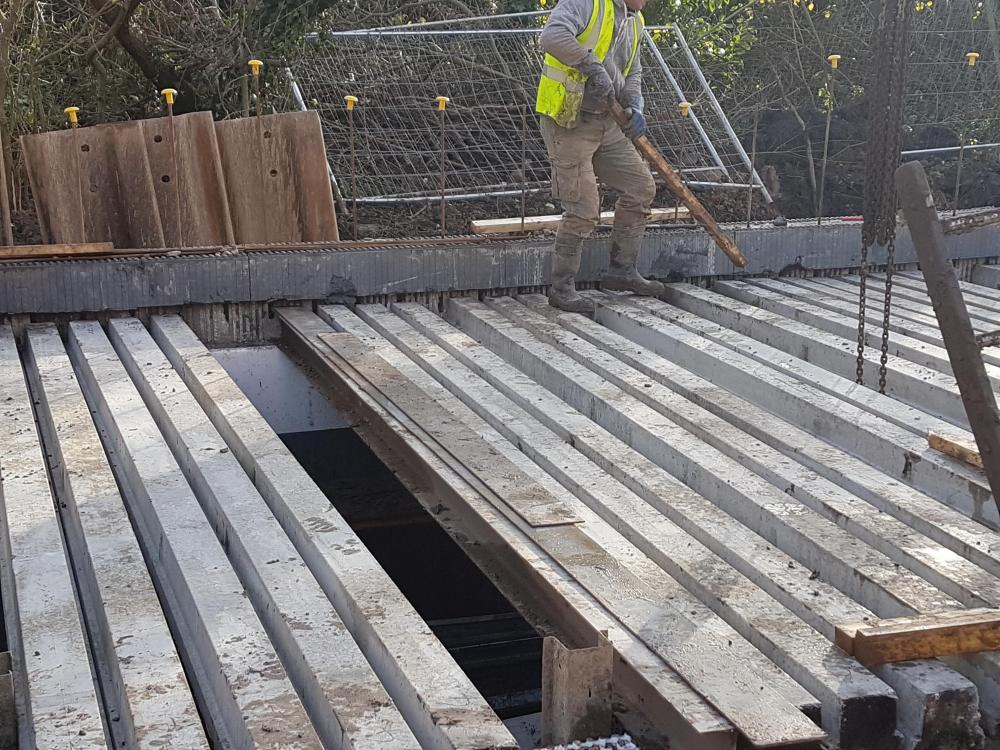

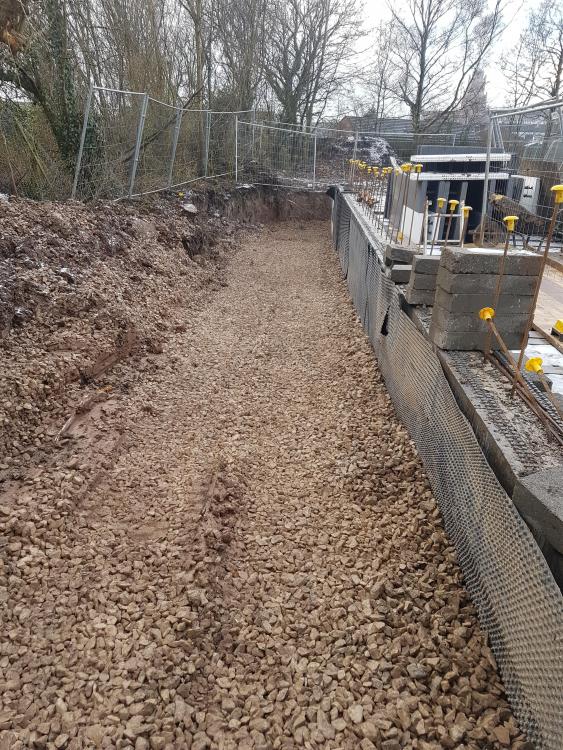
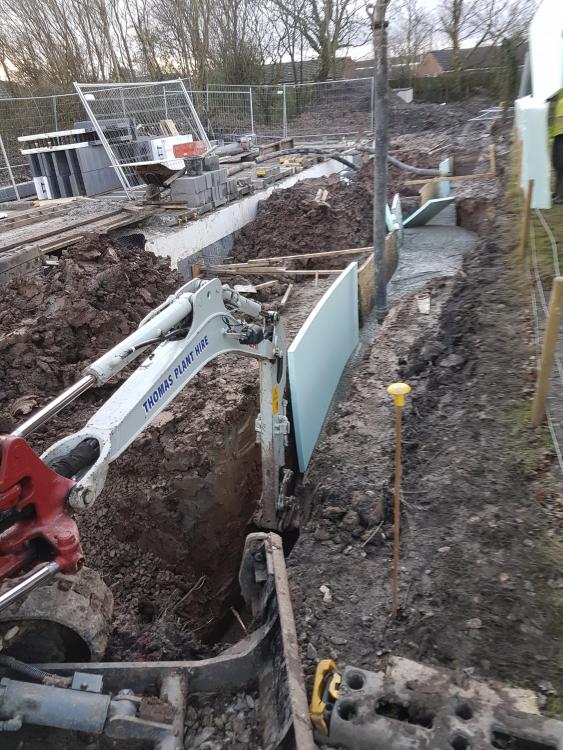
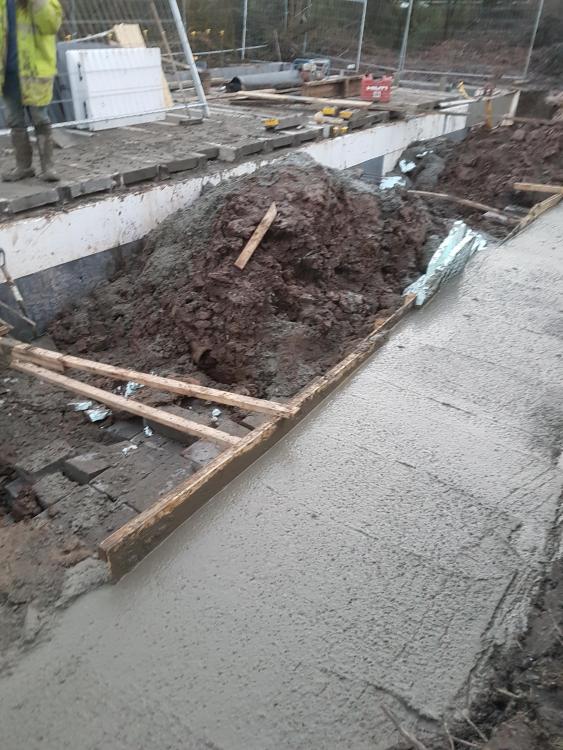
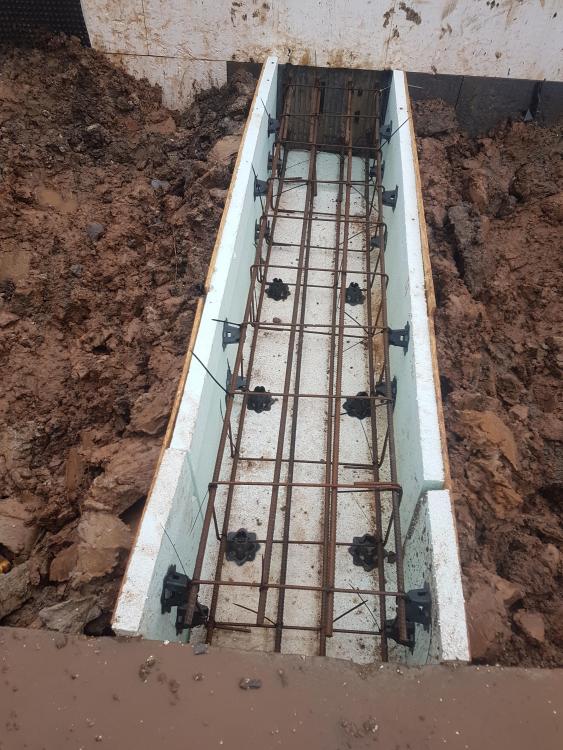
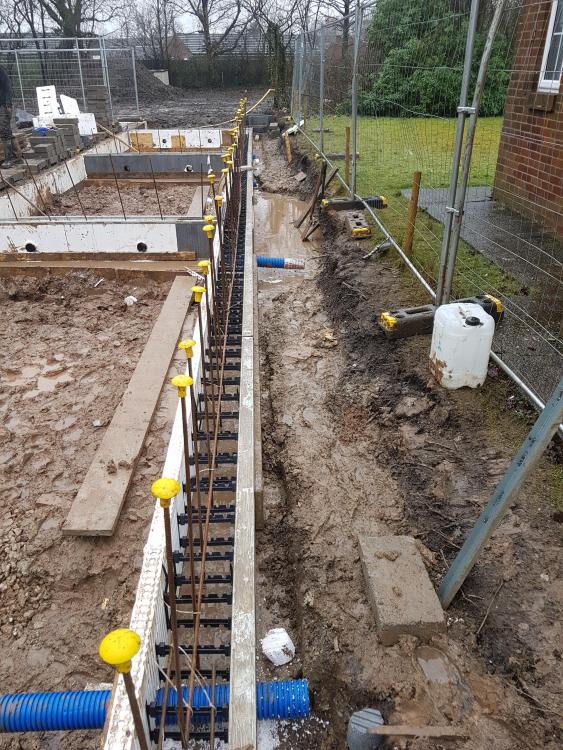
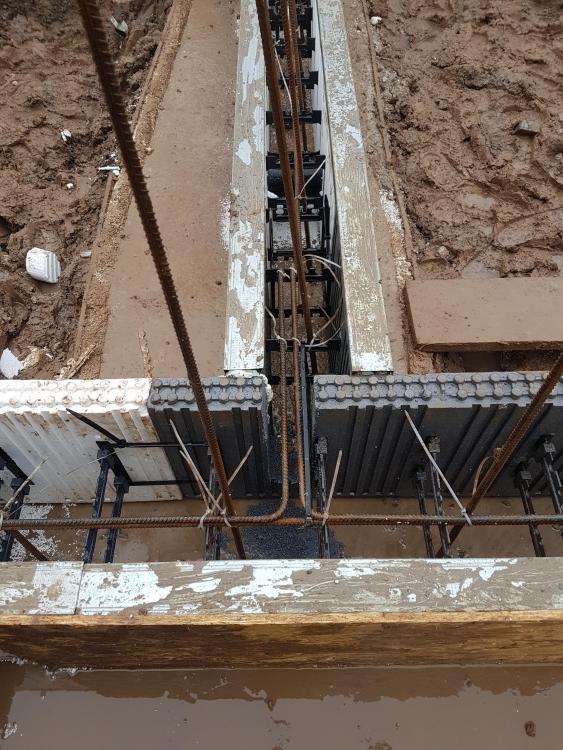
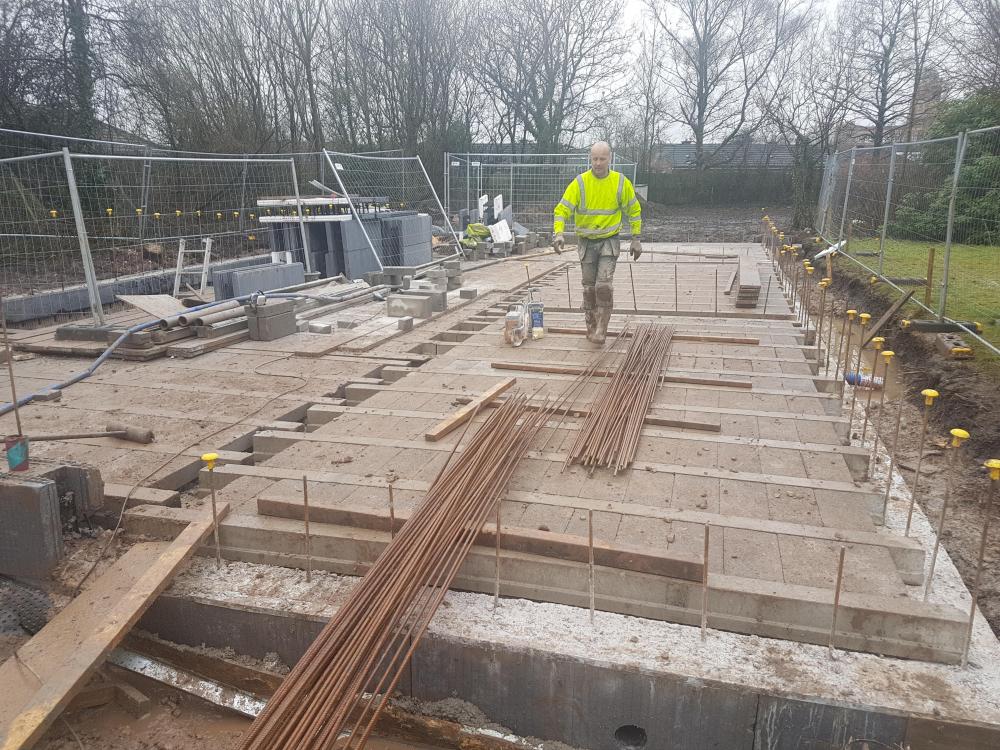
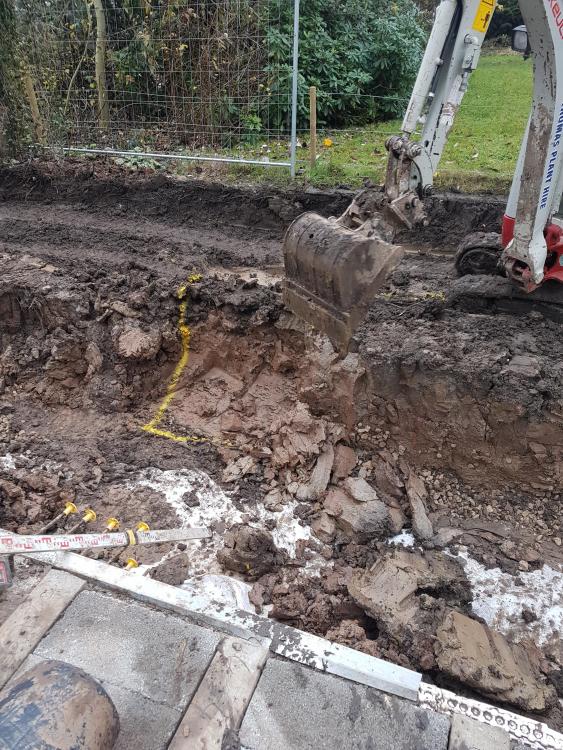
14 Comments
Recommended Comments
Create an account or sign in to comment
You need to be a member in order to leave a comment
Create an account
Sign up for a new account in our community. It's easy!
Register a new accountSign in
Already have an account? Sign in here.
Sign In Now